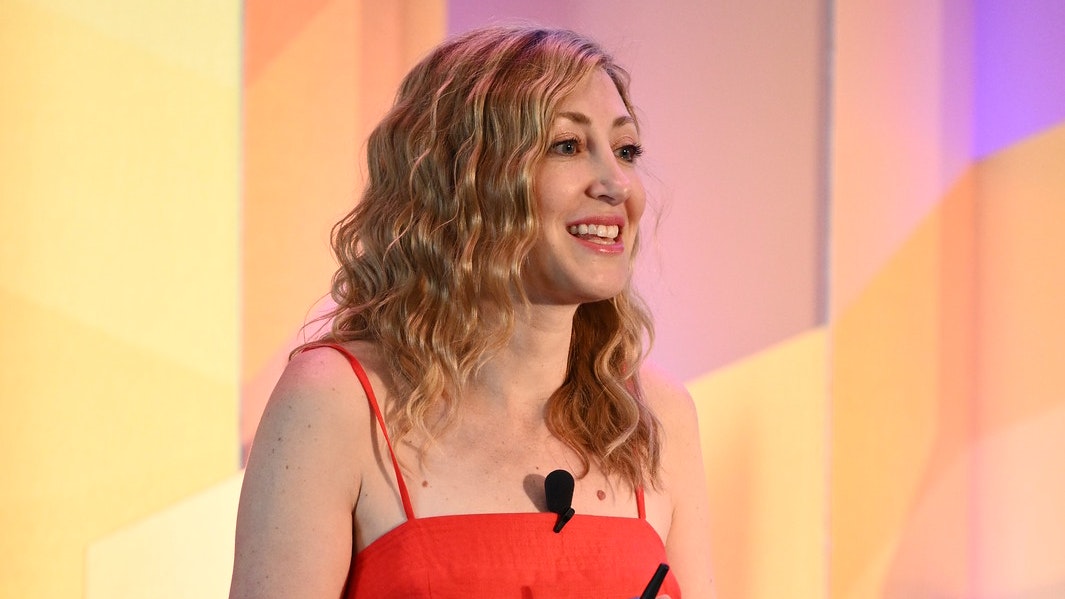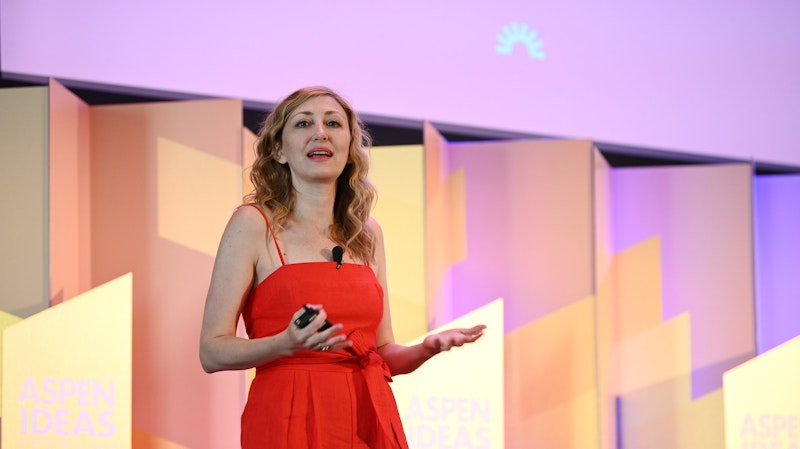
The Surprising Power of Joy
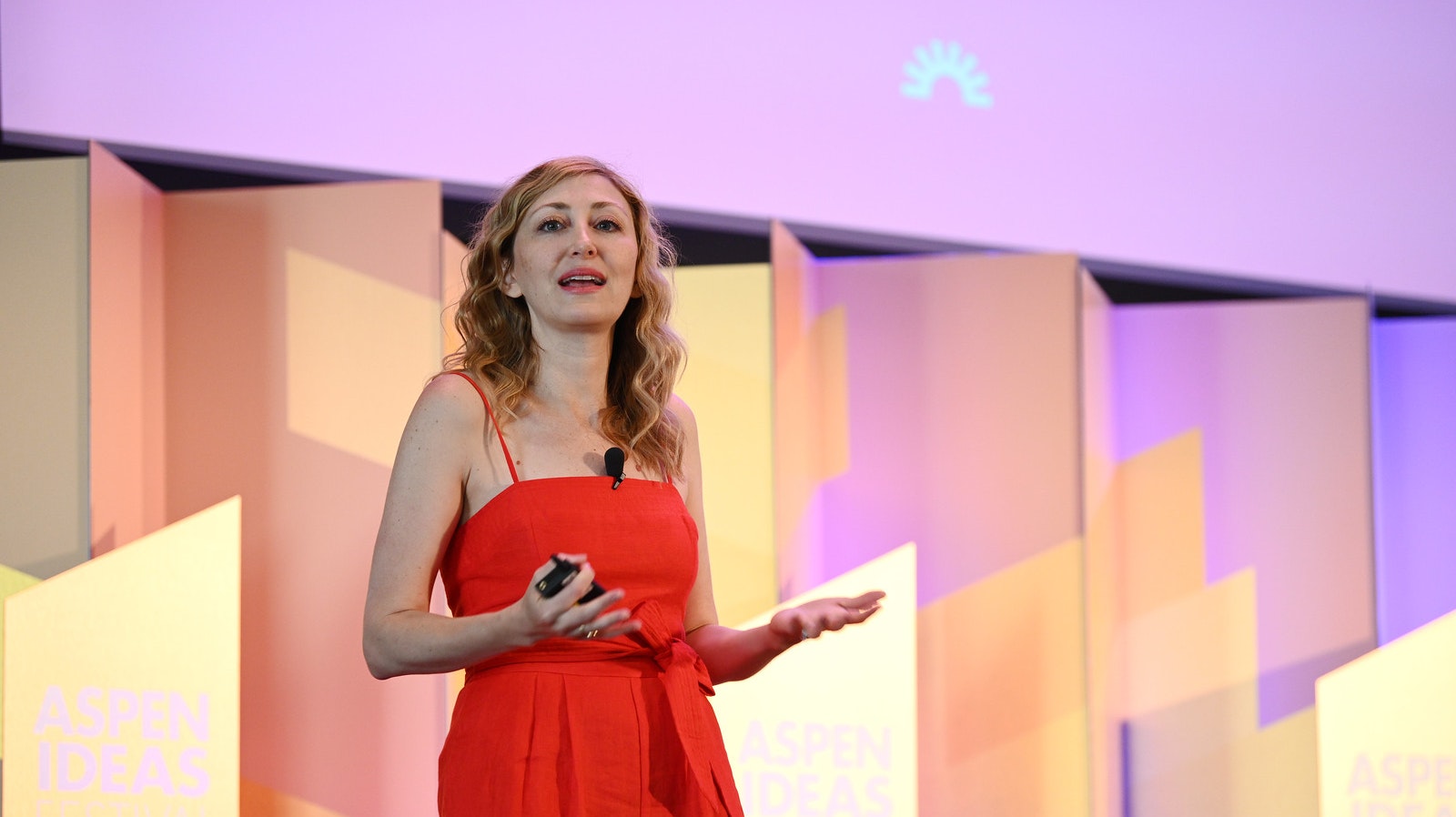
As a culture we are obsessed with the pursuit of happiness, and in the process, we forget about joy.
Full Session

Featured Highlights
Setup
We're often taught that our surroundings are incidental to our well-being, but an emerging body of research shows that the physical world can be a powerful tool for cultivating happier, healthier lives. Studies show that workers in colorful offices are more alert, friendly, and confident than those in drab ones, that windows can speed healing, and children progress faster in classrooms with better lighting. Join Ingrid Fetell Lee, author of "Joyful: The Surprising Power of Ordinary Things to Create Extraordinary Happiness," as she shares how simple changes to the world around us can improve our health, stimulate creativity, facilitate social harmony, and of course, promote joy. Underwritten by Sotheby's.
Happiness versus joy
Happiness and joy are often used interchangeably, but they’re actually two very different things. Happiness is a broad evaluation of how we feel about our lives over time, says designer Ingrid Fetell Lee, and the varying degrees of happiness — the ups and downs — make happiness hard to measure. Sometimes, we're not always sure just how happy we are. But joy is much simpler and more immediate, she explains; it’s “an intense momentary experience of positive emotion.” It’s observable in direct physical expressions like smiling, laughter, and a feeling of wanting to jump up and down.
Big IdeaIf I asked you what anxiety feels like in your body, you could probably tell me instantly. But we forget that joy has a feeling too.Ingrid Fetell Lee
Joy carries a plethora of positive impacts. Research shows that joy helps us be up to 12 percent more productive. It increases our cognitive flexibility and strengthens our relationships. “We live in this state of burnout," says Lee, “but if we make room for small moments for joy, they can help us be more resilient over the long haul.”
Swimming pools and rainbows — what gives you joy?
As a designer, Ingrid Fetell Lee wanted to understand the physical elements of joy. She found that things like cherry blossoms, bubbles, swimming pools, treehouses, rainbows, and rainbow sprinkles are universally joyful. The patterns she noticed became categories to organize the type of joy certain things elicit. Lee explains these different aesthetics of joy:
Big IdeaWe live in a world that is so sharply divided and polarized that sometimes it can feel like our differences are so stark as to be insurmountable. To me, there’s something really powerful in the idea that we all find joy in some of the same things. That underneath it all, there’s this part of us that has this silly attraction to things like googly eyes and rainbows.Ingrid Fetell Lee
Growing up doesn't have to mean giving up joy
We all start out joyful, says Ingrid Fetell Lee. “But as we get older, being colorful or exuberant opens us up to judgment,” and we worry about “being dismissed as childish or superficial or frivolous or self-indulgent.” Give yourself permission to do what feels joyful to you, Lee says, and ask yourself, what is something I loved to do when I was younger that I stopped doing, for some reason?
Did You Know?
“We often see joy as a distraction from success, something that we put off to our nights and our weekends because it doesn’t belong in the workplace, when in fact joy can be a catalyst for our success,” says Lee. Though it can be tempting to postpone joy during stressful times at work, it is ultimately one of our best tools to restore well-being.
Superficial changes, profound transformation
“We have a massive untapped opportunity to use our spaces in ways that can help people thrive,” argues Ingrid Fetell Lee. The lack of joyful design is most extreme in the places that house the people who are most vulnerable in our society, she says — places like schools, hospitals, nursing homes, and jails. Lee discusses a city in Albania and a youth development program in New York CIty that are making radical changes to their communities through simple pops of color:
Big IdeaWhen we say that color is a luxury and housing projects shouldn’t have that because they should only have the bare minimum, and when we say that people in poverty don’t deserve small joys in their day-to-day lives, it’s inherently dehumanizing.Ingrid Fetell Lee
Our physical surroundings can help us cultivate happier and healthier lives, both individually and socially — but at the same time they can be used to further marginalize people who are vulnerable. “This is an emerging public health issue and public health opportunity,” says Lee, and one that deserves attention.
How can we be more joyful? Try joyspotting.
A simple way to be more attuned to joy is what Ingrid Fetell Lee calls joyspotting, or noticing all the tiny joyful things in the environment immediately around us. For more joyful relationships, Lee emphasizes the importance of sharing joy and celebrating our partner’s joy with them. In designing living and working spaces, she suggests “joy is a palette we can work with” for “finding the right aesthetics for the right environment.”
Big IdeaThe first moment of genuine joy is the moment of commitment to the human experience. Joy is what makes us human. When we deny that, when we push joy off to the margins, when we say it’s extraneous, or it’s a luxury, we lose a piece of our humanity.Ingrid Fetell Lee
Joy is often the first thing to go when we’re stressed or experiencing a crisis. “If you feel yourself entering a mode of chronic stress, where it’s relentless, it’s very easy to dig in and say, I just have to get to the other side,” Lee points out. “That’s a good trigger to say, I should do some small and joyful thing now.”
Learn More
Additional Information
Resources
The Aesthetics of Joy
5 Simple Tips to Find Joy Every Day
Joyful: The Surprising Power of Ordinary Things to Create Extraordinary Happiness
Joy is a Form of Resilience
Explore More
Society


For years, Yale undergraduate students have lined up to take a wildly popular course called Life Worth Living. Bucking the highly competitive tone you might expect at an Ivy L...

Museums are typically testaments to the past, but a growing number are using exhibitions to shape our response to the future—specifically to climate change. Museum leaders wil...

Storytelling, music, animation, and podcasts! Watch the magic of innovative content being born as creatives pitch their ideas to a panel of Planet Media judges, each hoping to...

Global conflicts and health crises have put into stark relief deeply-ingrained gender roles in society. Yet the past years have also seen record-high numbers of women running...


After millennia of human existence, we’re still figuring out and talking constantly about one of our most fundamental behaviors – sex. Despite the sexual revolution of the 60s...


Teenagers and young adults today are dealing with challenges their parents never experienced and couldn’t have prepared for. Nobody has a map and the road to resolution can be...

The unflinching humanity and morality that Martin Luther King, Jr. embodied is part of what makes his legacy so lasting. In addition to his preeminent civil rights work, he sp...


William Shakespeare started writing plays in an era when popular theater was exploding and cementing its place in culture. Audiences spanned economic classes, professions and...

Whether you love setting New Year’s resolutions or ignore them entirely, there’s still a certain mix of nostalgia and excitement over the ending of one year and the possibilit...


Living a happy life isn’t as simple as having a smile on your face all the time. We often think that our negative emotions should be minimized and repressed, but acknowledging...

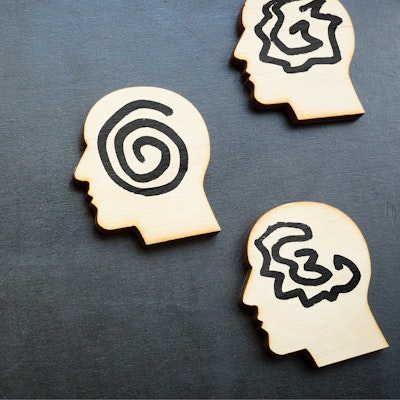
The human capacity for empathy allows us to communicate, collaborate and understand each other. But we all know empathy isn’t always easy, and we can feel worn down by the eff...


The stories we hear about migrants trying to escape difficult circumstances tend to focus on hardship, conflict, statistics and policy. We rarely get a deep look at any of the...


When Duke divinity school professor Kate Bowler wrote her best-selling memoir, “Everything Happens for a Reason (and Other Lies I’ve Loved),” she was grappling with the conseq...


For adults, the pressure to drink at social engagements, work events, restaurants or almost anywhere outside the home can feel constant. Recent research has found that “no amo...

Whether expressed through systems that are easy to navigate, devices that are friendly to their users, and spaces that are pleasing to the eye, thoughtful design can break dow...


In today’s world, we tend to switch jobs more frequently than previous generations, and are more likely to have multiple jobs. Side gigs where we express passions or find mean...


Shakespeare is ubiquitous in literature classes and theater, but the avenues of relating to his work are not always clear to young people and modern audiences. Some, such as S...

October is National Book Month, and we’re celebrating by looking back at some of our favorite conversations about reading and writing from the Aspen Ideas Festival and Aspen I...
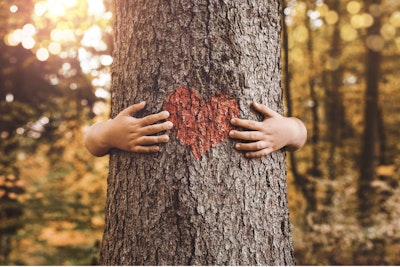
Finding ways to ground ourselves on a planet too often in turmoil can foster the resilience we need to function at our best. By maintaining close personal ties, learning new s...

Philosophers throughout history have debated what it means to live a good life, and it remains an ongoing and unresolved question. Deep personal relationships, fulfilling work...







